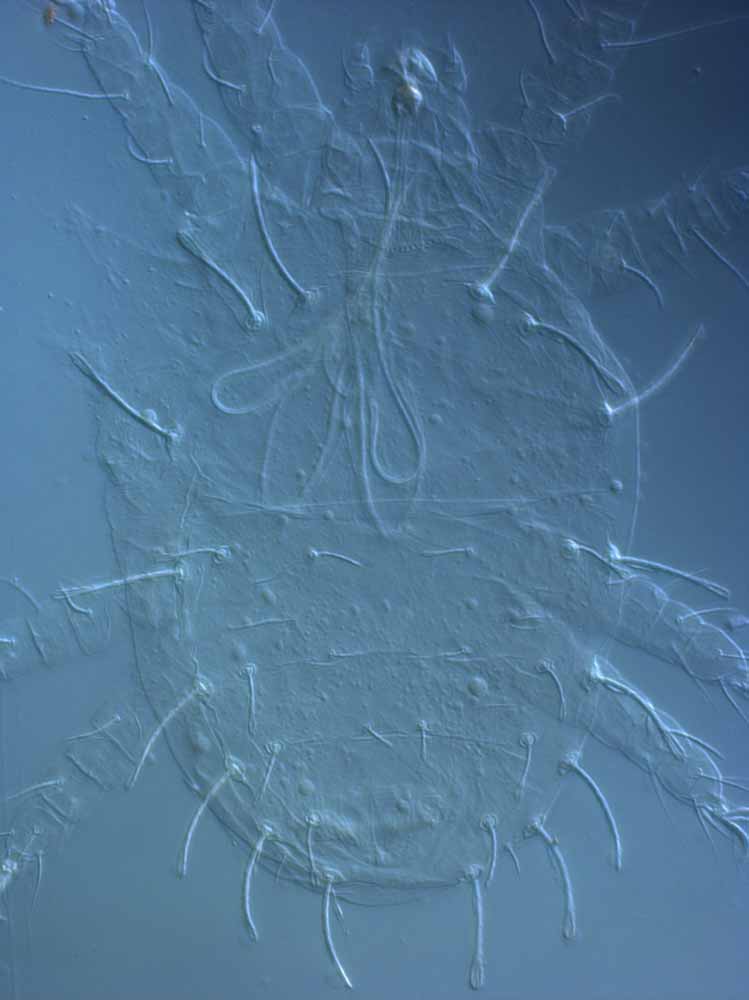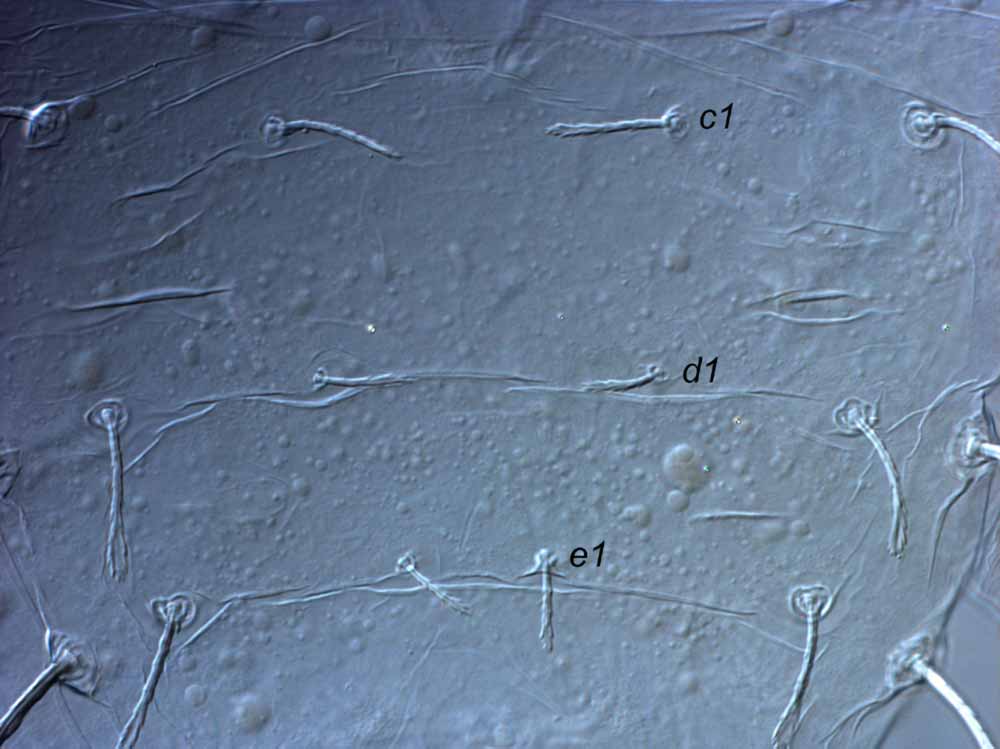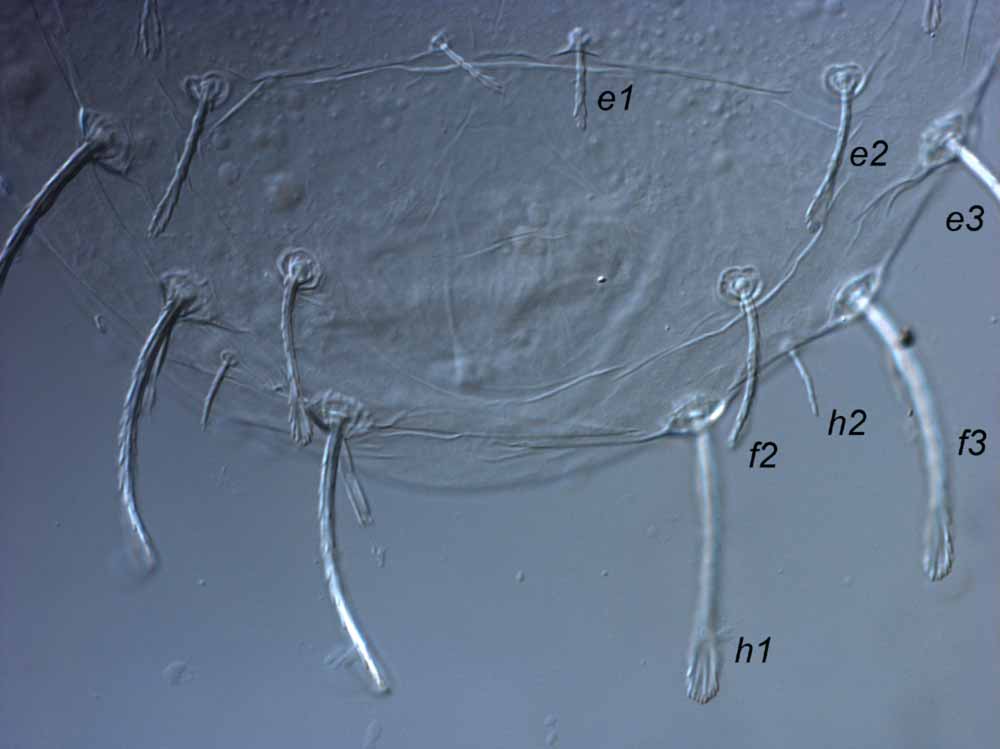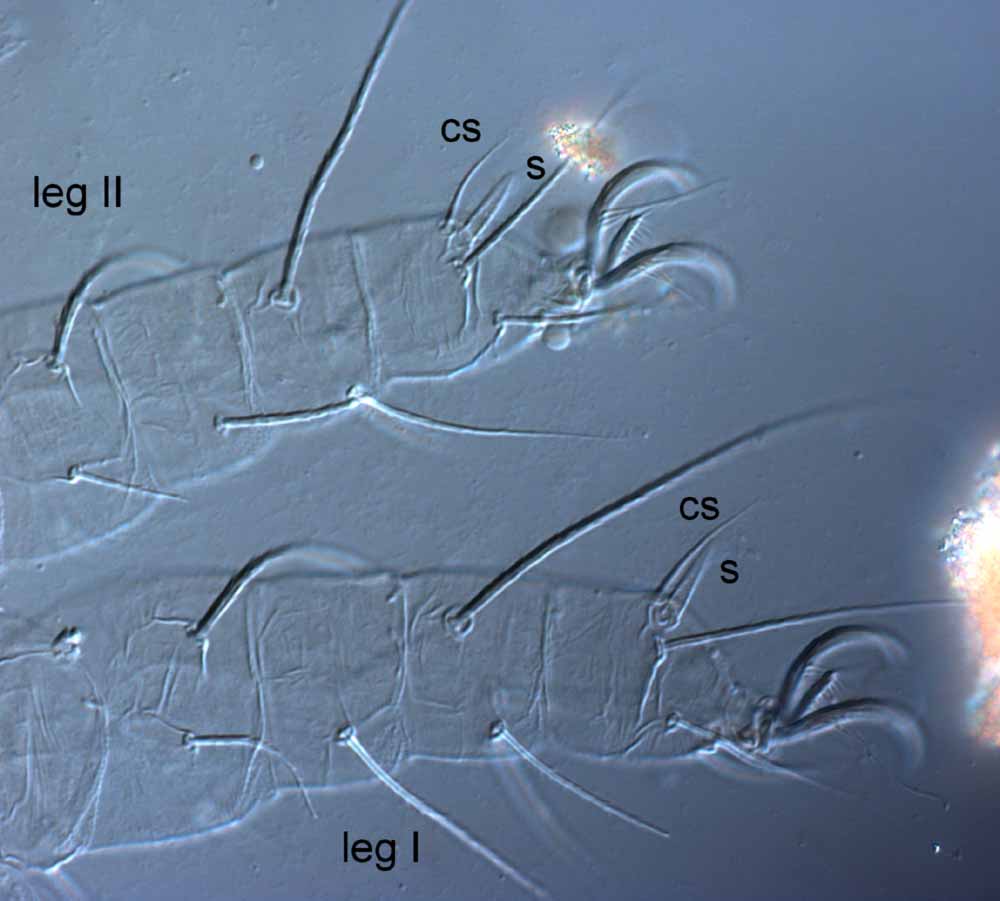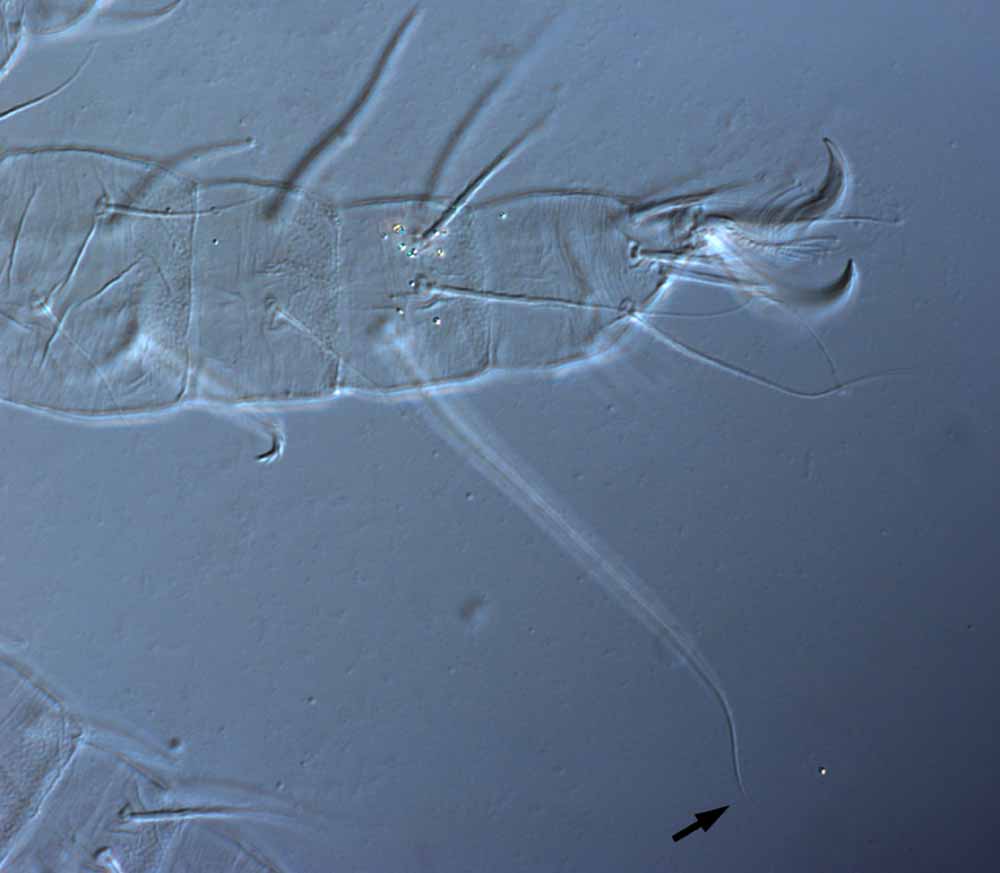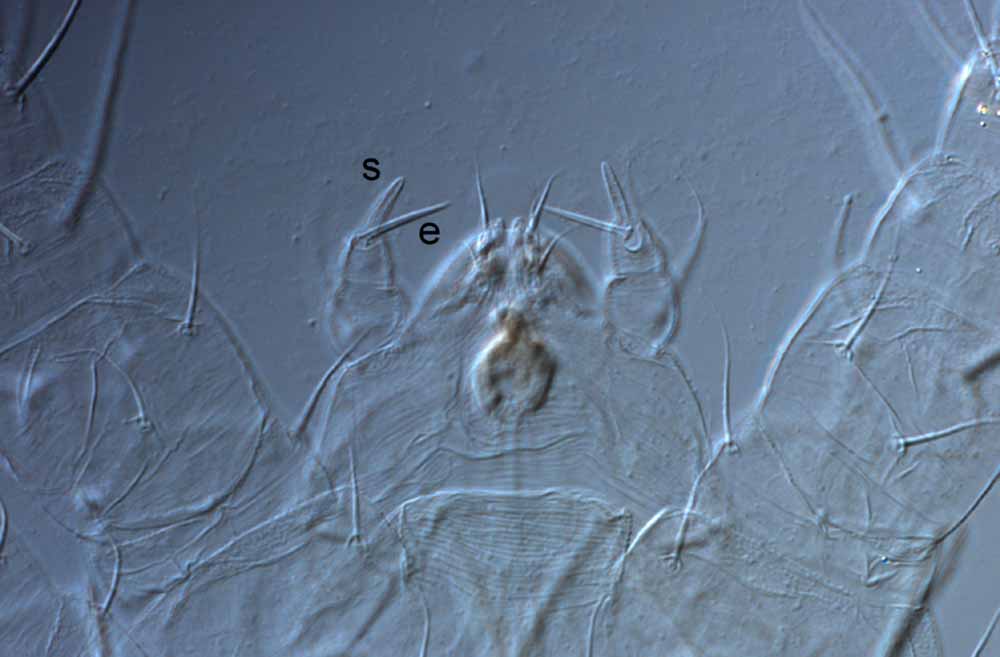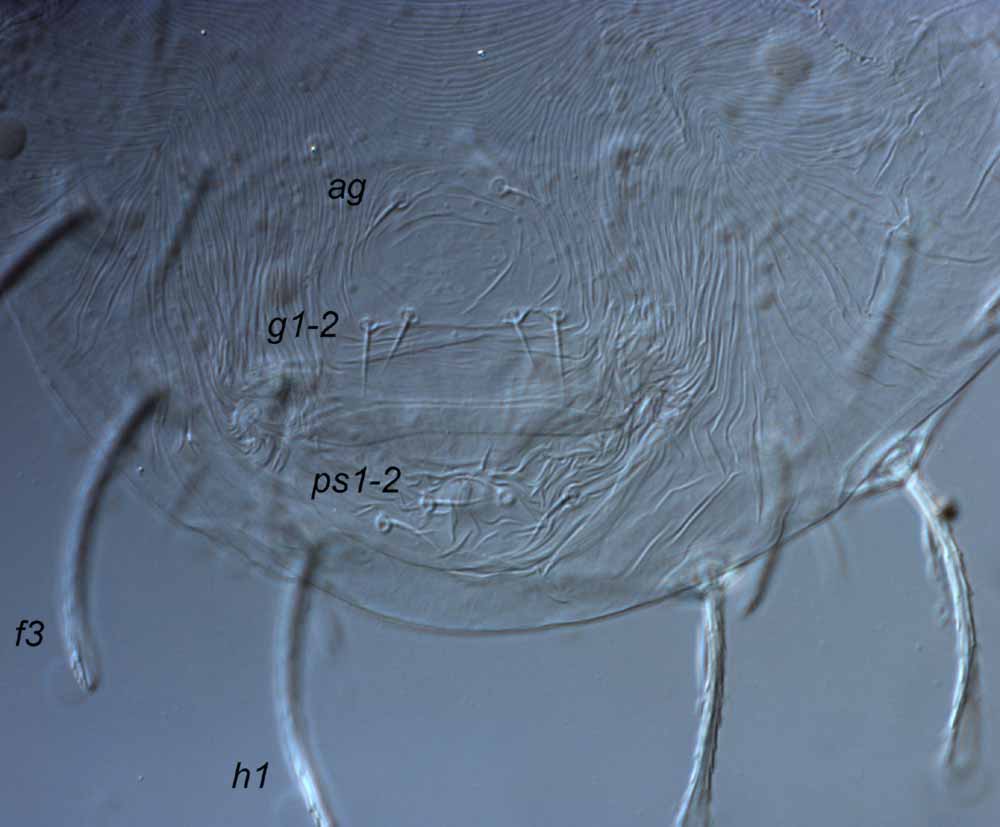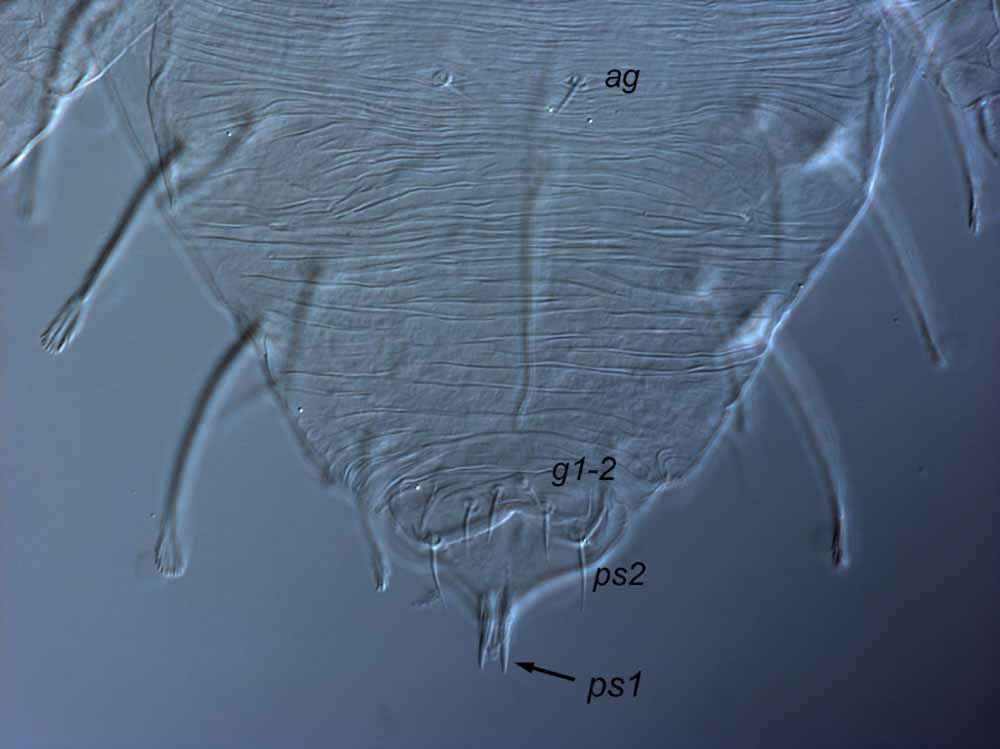Raoiella didcota
|
Fig. 1. Raoiella didcota adult female dorsum. |
|
Fig. 2. Raoiella didcota adult female, central dorsum. |
|
Fig. 3. Raoiella didcota adult female posterior dorsum. |
|
Fig. 4. Raoiella didcota adult female legs I-II (left-side) (s = solenidion; cs = companion seta). |
|
Fig. 5. Raoiella didcota adult female leg I (arrow indicates dorsal seta on tibia). |
|
Fig. 6. Raoiella didcota adult female palps (s = solenidion; e = eupathidium). |
|
Fig. 7. Raoiella dicota adult female posterior venter indicating setae ps1-2 (g = genital setae; ag = aggential setae). |
|
Fig. 8. Raoiella dicota adult male posterior venter (g = genital setae; ag = aggenital setae). |
Authority
Beard
Key characters
- setae c1, d1, e1 with broad blunt tips, not obviously spatulate, but can appear weakly spatulate (Figs. 1, 2)
- seta h1 obviously longer than h2 (Fig. 3)
- seta h2 short, with blunt, thick tip (sometimes slightly tapered) (Fig. 3)
- seta f2 shorter than f3 (Fig. 3)
- coxae III-IV nude
- femur II with 4 setae (d, l', bv", v')
- genua I-II with 2 setae (l', l" present; d absent)
- tarsi I-II with companion seta longer than solenidion (make sure fine tip of companion seta is visible) (Fig. 4)
- dorsal setae on tibiae I-II setiform, with tapered tip (Fig. 5)
- palp tibiotarsus with one solenidion and one blunt eupathidium distally (Fig. 6), and one seta dorsally
- setae ps1 and ps2 inserted adjacent to each other (Fig. 7)
- male with moderate ps1 setae, 12-13 microns (Fig. 8)
- male femur II with 4 setae (d, l', bv", v')
- male genua I-II with 3 setae (d, l', l")
- larva unknown
Similar species
Raoiella didcota is morphologically similar to Raoiella davisi.
Raoiella didcota: dorsal opisthosomal setae c1 < 25 microns; prodorsal setae v2 < 60 microns.
Raoiella davisi: dorsal opisthosomal setae c1 > 30 microns; prodorsal setae v2 > 60 microns.
Distribution
Australia (QLD)
Hosts
Broad-leaved apple, Angophora subvelutina (Myrtaceae)
Remarks
This species is placed in the australica species group proposed by Beard et al. (2018).
Collected from habitat along a creek.
References
Beard et al. (2018)

